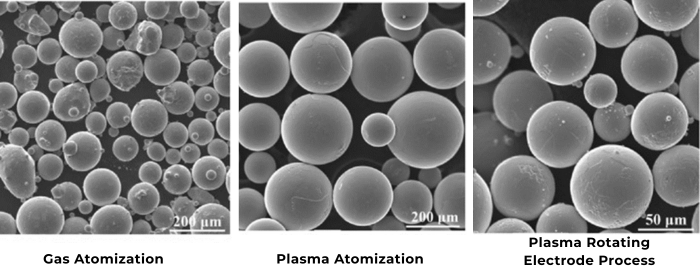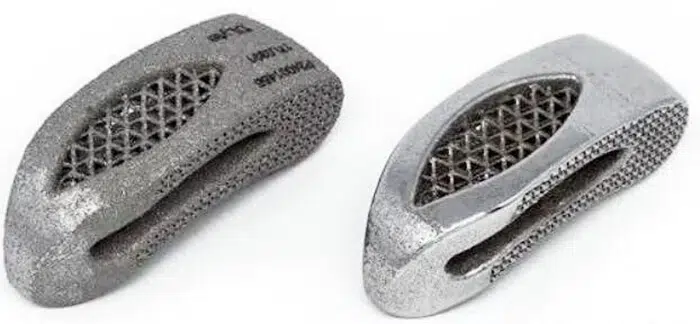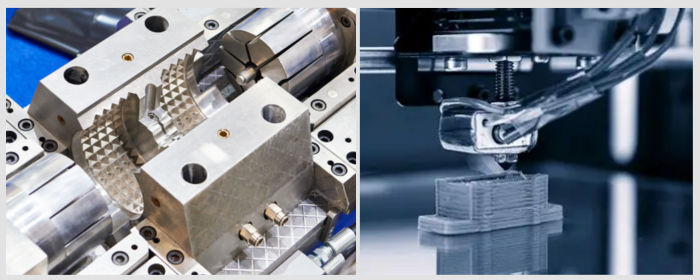

This is a submission for SAM's 2024 Scholarship on spherical powder, written by Samuel Enebi.
Spherical powder technology is an advanced materials processing technique that produces powders with near-perfect spherical morphology. This technology has far-reaching applications across diverse fields such as aerospace, biomedical, energy, and electronics. The inherent characteristics of spherical powders, including their high flowability, uniform particle size distribution, and superior packing density, make them invaluable in modern manufacturing and technology.
In the aerospace industry, the demand for lightweight, high-performance materials is ever-increasing. Spherical powder technology plays a crucial role in meeting these requirements, particularly in the production of advanced metal alloys and composites. One of the primary applications is in additive manufacturing or 3D printing, where spherical metallic powders such as titanium, aluminum, and nickel-based superalloys are extensively used.
The spherical morphology of these powders ensures optimal flowability, which is essential for the layer-by-layer deposition process in 3D printing. High flowability reduces clogging and ensures a uniform build, resulting in components with superior mechanical properties and minimal defects. These benefits are critical for aerospace components, which require intricate designs and must withstand extreme conditions.
Moreover, spherical powders are pivotal in the production of turbine blades and other critical engine components. The uniform particle size distribution and high packing density of these powders lead to enhanced material properties, such as increased fatigue resistance and improved thermal stability. This results in more efficient engines with longer lifespans and reduced maintenance costs.
The biomedical field also benefits significantly from spherical powder technology. One of the most notable applications is in the fabrication of implants and prosthetics through additive manufacturing. Spherical powders of biocompatible metals, such as titanium and its alloys, are used to create custom orthopedic implants and dental structures.
The precision and customization enabled by 3D printing with spherical powders allow for the production of implants that perfectly match a patient's anatomy. This leads to better integration with the body, reduced recovery times, and improved overall outcomes. Additionally, the surface properties of spherical metal powders can be tailored to promote osseointegration, further enhancing the performance of biomedical implants.
Spherical powders are also instrumental in the development of drug delivery systems. Controlled-release drug formulations can be achieved by encapsulating medications within spherical particles, ensuring a consistent and targeted release of the active ingredient. This not only enhances the efficacy of the treatment but also minimizes side effects.
In the energy sector, spherical powder technology contributes to advancements in several areas, including battery technology and fuel cells. For instance, spherical graphite and silicon powders are key materials in the production of high-performance lithium-ion batteries. The uniformity and high packing density of these powders improve the energy density and cycle life of the batteries, making them more efficient and reliable.
Spherical metal powders also find applications in solid oxide fuel cells (SOFCs). These fuel cells require materials that can operate at high temperatures while maintaining conductivity and structural integrity. Spherical powders of materials like yttria-stabilized zirconia (YSZ) serve as electrolytes and electrodes in SOFCs, contributing to their efficiency and longevity.
Furthermore, spherical powder technology is employed in the production of advanced coatings for solar panels. These coatings, made from spherical metal oxide powders, enhance the panels' efficiency by increasing light absorption and reducing energy loss. This ultimately leads to more cost-effective and sustainable solar energy solutions.
The electronics industry is another sector that benefits immensely from spherical powder technology. One of the primary applications is in the production of conductive inks and pastes used in printed circuit boards (PCBs) and other electronic components. Spherical metal powders, such as silver and copper, are used to create these inks due to their excellent electrical conductivity and high surface area.
The uniform particle size and spherical shape of these powders ensure consistent and reliable printing, which is crucial for the intricate designs of modern electronic devices. This results in improved performance and reliability of electronic components, contributing to the miniaturization and enhanced functionality of devices.
Moreover, spherical powders are essential in the production of advanced semiconductor materials. Silicon and germanium powders with spherical morphology are used in the fabrication of semiconductor wafers and integrated circuits. Their uniformity and high purity are critical for achieving the precision required in semiconductor manufacturing, leading to faster and more efficient electronic devices.
The development of spherical powder technology has been driven by advancements in several processing techniques, such as gas atomization, plasma atomization, and centrifugal atomization. These methods enable the production of powders with controlled size distribution, high purity, and consistent spherical shape.
Gas atomization, for instance, involves the rapid cooling of molten metal streams using a high-pressure gas, resulting in the formation of spherical particles. Plasma atomization uses a plasma torch to melt the material, which is then atomized into fine spherical powders. Centrifugal atomization, on the other hand, utilizes centrifugal forces to break up molten metal into spherical droplets.
Continuous research and development in these techniques are expected to further enhance the quality and variety of spherical powders available, opening up new possibilities in various industries. For example, the development of multi-material powders that combine different metals or ceramics could lead to the creation of hybrid materials with unique properties, suitable for specialized applications.
In summary, spherical powder technology is a transformative advancement with far-reaching implications across multiple fields, including aerospace, biomedical, energy, and electronics. Its ability to produce powders with superior flowability, uniformity, and packing density makes it an invaluable tool in modern manufacturing and technology. As research and development in this area continue to advance, spherical powders are poised to play an even more significant role in shaping the future of various industries, driving innovation and enhancing the performance of countless applications.







